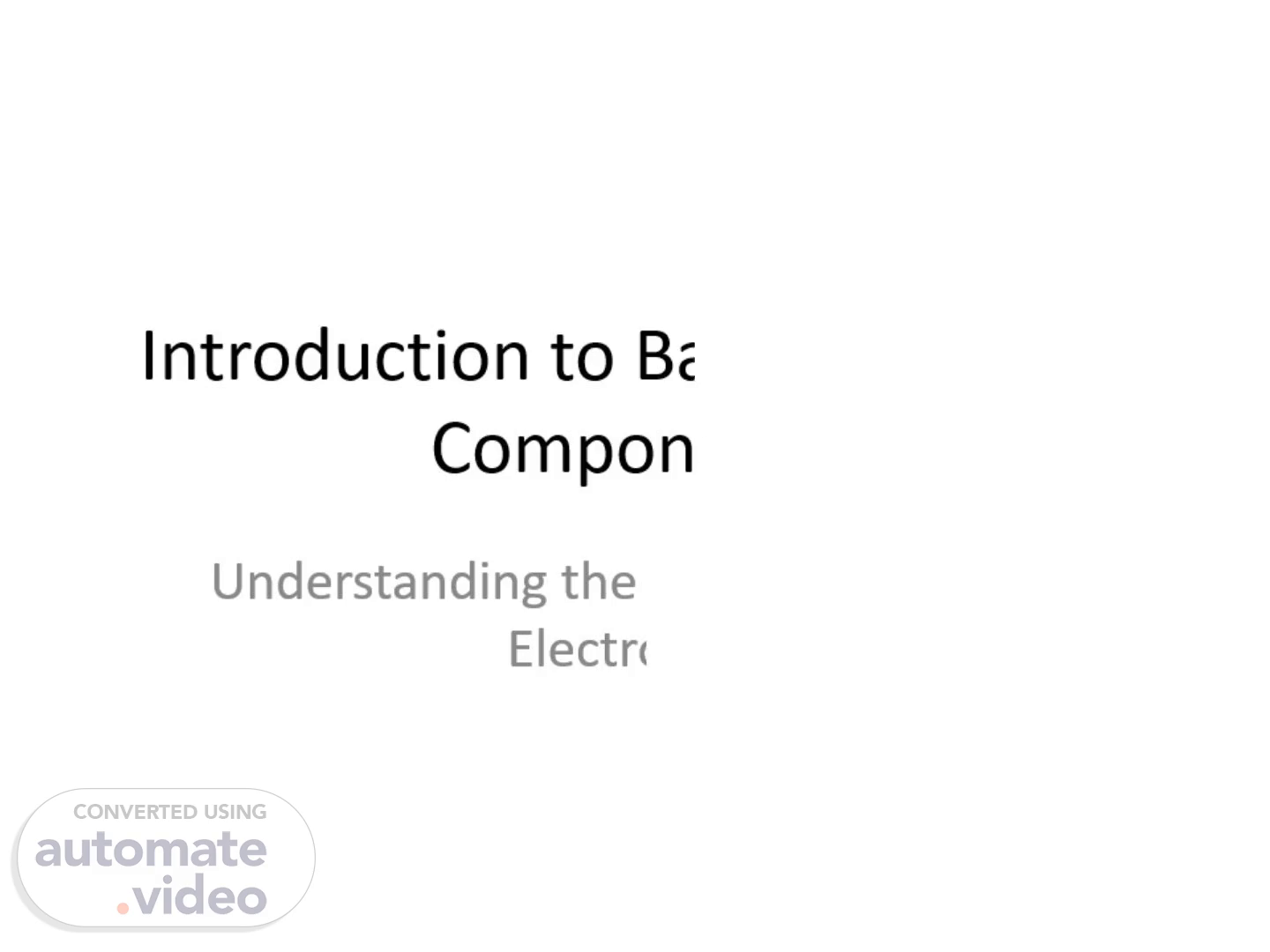Scene 1 (0s)
Introduction to Basic Electronic Components. Understanding the Building Blocks of Electronics.
Scene 2 (7s)
Resistor. A resistor is a component that resists the flow of electric current. Symbol & Unit: Ω (Ohm) Uses: Voltage division, current control.
Scene 3 (18s)
Capacitor. A capacitor stores electrical energy in an electric field. Symbol & Unit: F (Farad) Uses: Filtering, smoothing, timing.
Scene 4 (29s)
Inductor. An inductor stores energy in a magnetic field when current flows through it. Symbol & Unit: H (Henry) Uses: Filtering, energy storage, tuning.
Scene 5 (40s)
Diode. A diode allows current to flow in one direction only. Types: PN Diode, Zener Diode, LED Uses: Rectification, voltage regulation, indication.
Scene 6 (52s)
Transistor. A transistor amplifies or switches electronic signals. Types: NPN, PNP (BJT), MOSFET Uses: Amplifier, Switch, Signal Modulation.
Scene 7 (1m 3s)
Integrated Circuit (IC). An IC contains multiple electronic components in one package. Uses: Microprocessors, Amplifiers, Logic gates.
Scene 8 (1m 14s)
Switch. A switch opens or closes a circuit path manually or automatically. Types: SPST, SPDT, Push Button.
Scene 9 (1m 24s)
Battery. A battery provides DC power to circuits. Types: AA, Coin Cell, Li-ion.
Scene 10 (1m 34s)
Conclusion. Basic components are the foundation of electronics. Next Step: Learn about how these components interact in circuits..
